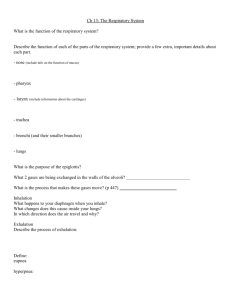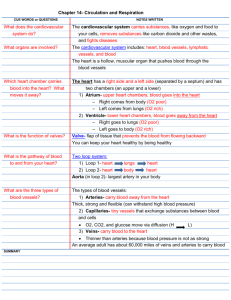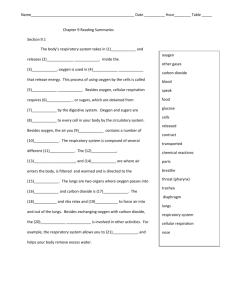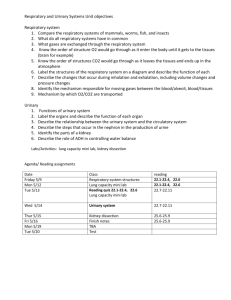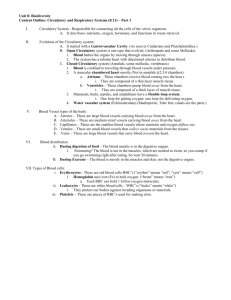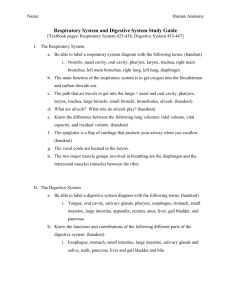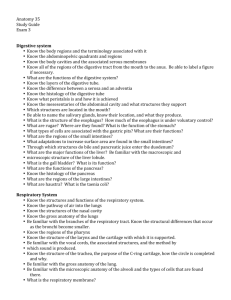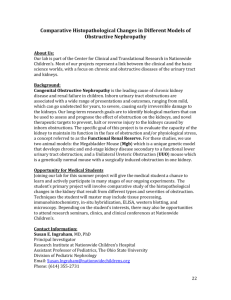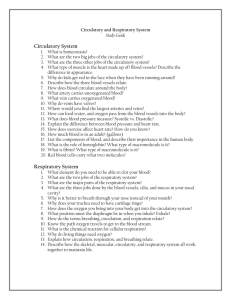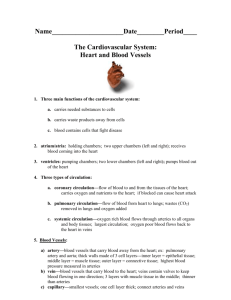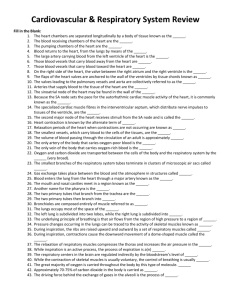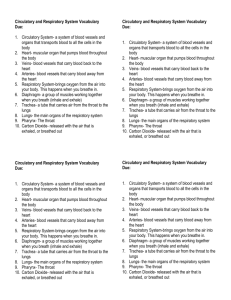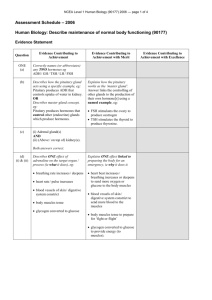1, 8, 9, 10, 11, 12, 15, 18
advertisement
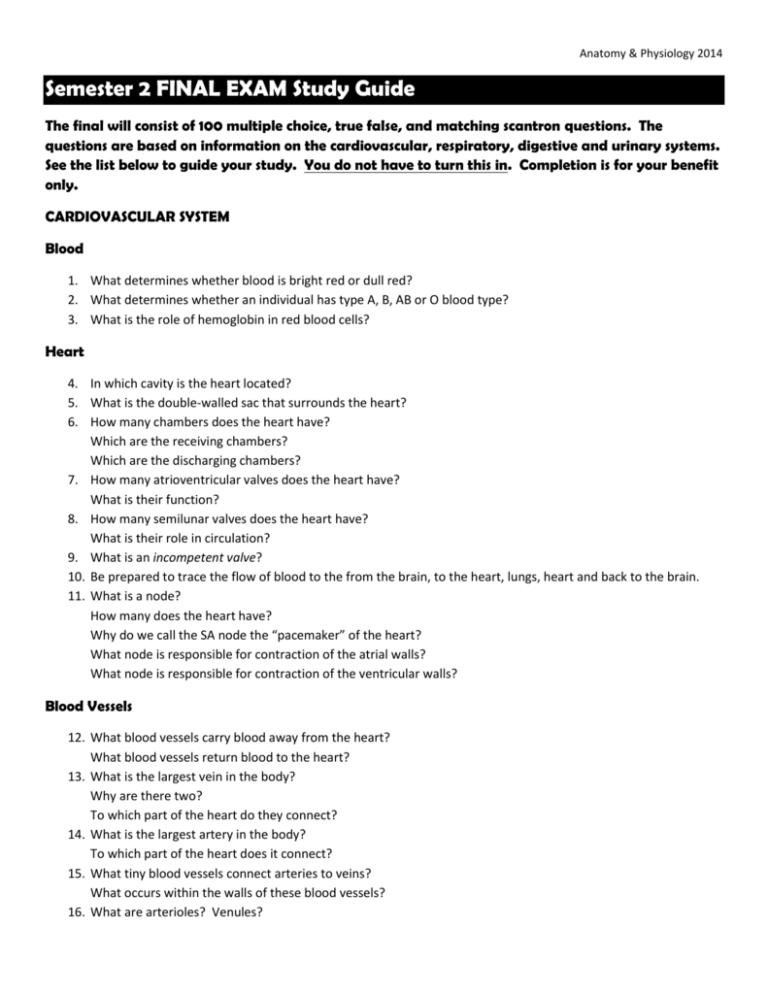
Anatomy & Physiology 2014 Semester 2 FINAL EXAM Study Guide The final will consist of 100 multiple choice, true false, and matching scantron questions. The questions are based on information on the cardiovascular, respiratory, digestive and urinary systems. See the list below to guide your study. You do not have to turn this in. Completion is for your benefit only. CARDIOVASCULAR SYSTEM Blood 1. What determines whether blood is bright red or dull red? 2. What determines whether an individual has type A, B, AB or O blood type? 3. What is the role of hemoglobin in red blood cells? Heart 4. In which cavity is the heart located? 5. What is the double-walled sac that surrounds the heart? 6. How many chambers does the heart have? Which are the receiving chambers? Which are the discharging chambers? 7. How many atrioventricular valves does the heart have? What is their function? 8. How many semilunar valves does the heart have? What is their role in circulation? 9. What is an incompetent valve? 10. Be prepared to trace the flow of blood to the from the brain, to the heart, lungs, heart and back to the brain. 11. What is a node? How many does the heart have? Why do we call the SA node the “pacemaker” of the heart? What node is responsible for contraction of the atrial walls? What node is responsible for contraction of the ventricular walls? Blood Vessels 12. What blood vessels carry blood away from the heart? What blood vessels return blood to the heart? 13. What is the largest vein in the body? Why are there two? To which part of the heart do they connect? 14. What is the largest artery in the body? To which part of the heart does it connect? 15. What tiny blood vessels connect arteries to veins? What occurs within the walls of these blood vessels? 16. What are arterioles? Venules? RESPIRATORY SYSTEM 1. 2. 3. 4. 5. 6. 7. 8. 9. 10. 11. 12. 13. What is the major function of the respiratory system? What are the organs of the respiratory system? How many paranasal sinuses are there? ______ Where is the pharynx? What do we commonly call the pharynx? What is the function of the pharynx? What is another name for the larynx? What are its two main functions? The epiglottis is called the “guardian of the airways”. What does it do during swallowing? The trachea is also referred to as the __________________ What are bronchi? In which cavity would you find the lungs? Why is the right lung bigger than the left? What are bronchioles? What are alveoli? What are the two phases of one complete breath? DIGESTIVE SYSTEM 1. Know the definitions of the following digestive terms: Saliva Mastication Deglutition Peristalsis Feces Defecation 2. Know the function of the following digestive organs: See Ch. 14 packet #5 and STRUCTURE/FUNCTION CHART in Ch 14 Reading Notes Anus Cheeks /closed lips Rectum Esophagus (gullet) Salivary glands Frenulum Small intestine Gall bladder Stomach Large intestine Teeth Liver Tongue Pancreas Villi Pharynx Greater omentum 3. See Ch 14 Reading Notes. Study the followng questions: 1, 8, 9, 10, 11, 12, 15, 18 URINARY SYSTEM 1. Know the two main functions of the kidney 2. Know what blood vessel take blood to the kidneys and what blood vessel removes blood from the kidneys. 3. Be prepared to be tested on the following information: What is hydronephrosis? 514 How is it associated with weight loss? Approximately, what percent of our total blood supply passes through the kidneys each minute? ______% 514 How many nephrons does each kidney contain? 514 What do nephrons do? Understand the difference between the 3 major renal processes: glomerular filtration, tubular reabsorption, tubular secretion. See Figure 154 (p 518). What is the color of urine? Why does it change colors? 521 Why does urine smell? 521 What are the ureters? What do they do? What causes kidney stones (renal calculi)? 522-3 What are the symptoms of a urinary track infection such as urethritis? 524 Why do women experience these types of infections far more than men? What is micturition? 524 What is incontinence? 524
